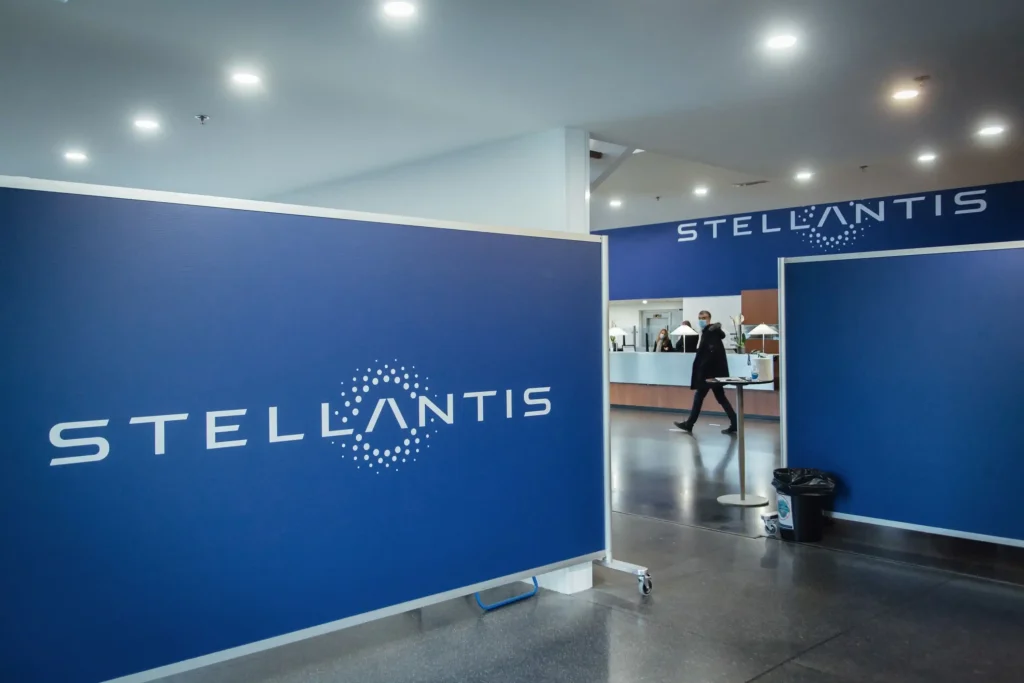Stellantis, the multinational carmaker behind brands like Peugeot, Fiat, and Chrysler, announced on Wednesday that it will terminate its hydrogen fuel cell program and halt all plans to launch hydrogen-powered vehicles in 2025. The decision, which marks a major pivot in the group’s alternative energy strategy, casts uncertainty over the future of Symbio, the hydrogen tech joint venture in which Stellantis holds a significant stake.
Hydrogen No Longer on the Horizon
Jean-Philippe Imparato, Stellantis’ Chief Operating Officer for Enlarged Europe, explained the reasoning behind the dramatic shift in direction.
“The hydrogen market remains a niche segment, with no prospects of mid-term economic sustainability,” Imparato stated in the official announcement.
Stellantis had previously outlined plans to scale up its hydrogen-powered van fleet, with serial production for its Pro One range scheduled to begin this summer in Hordain, France and Gliwice, Poland. Those plans have now been shelved as the company pivots toward electric and hybrid passenger and light commercial vehicles, which it believes offer a more viable and competitive path forward.
Despite pulling back from hydrogen technology, Stellantis assured stakeholders that the change would not affect staffing at its production sites. The company emphasized that research and development efforts previously dedicated to hydrogen would be redirected to other priority projects in its electric mobility roadmap.
Fallout for Symbio: Financial and Operational Concerns
The announcement sent shockwaves through Stellantis’ key partners in the hydrogen space—Michelin and Forvia, who jointly own Symbio, the company’s hydrogen subsidiary. Stellantis joined Symbio as a shareholder in 2023, and is currently its largest customer, reportedly accounting for up to 80% of its business volume, according to Forvia.
Both partners expressed dismay over the abrupt decision.
“Stellantis’ decision came as a surprise and will have serious operational and financial consequences for Symbio,” Forvia said in a statement.
Michelin echoed the concern, saying:
“Our primary worry lies with the impact this will have on Symbio’s employees, both in France and abroad.”
Symbio employs more than 650 people globally, with facilities in eastern France and a newly opened site in California. Just last year, the company launched a hydrogen gigafactory aimed at scaling production for what it believed would be a fast-growing market.
Now, the company’s future appears uncertain. Stellantis said it has begun discussions with Symbio’s shareholders to evaluate how the market will react and to safeguard the interests of the joint venture, suggesting that a strategic reassessment—or even a potential restructuring—may be on the horizon.
A Shift in Energy Strategy
The announcement highlights a significant recalibration of Stellantis’ clean energy strategy, as the automaker zeroes in on battery-electric and hybrid technologies. The group said it made the decision as part of a broader effort to “make clear and responsible choices” that ensure long-term competitiveness and satisfy customer expectations.
Stellantis’ move comes at a time when global demand for battery-electric vehicles (BEVs) is on the rise, and infrastructure for hydrogen refueling remains limited and expensive in many regions, especially across Europe and North America. While hydrogen fuel cells offer certain advantages—like faster refueling and longer range—they face major obstacles in cost, efficiency, and infrastructure compared to electric batteries.
Industry analysts have increasingly questioned the viability of hydrogen vehicles, particularly in the passenger and light commercial segments, where EVs are quickly becoming the norm. While hydrogen may still play a role in heavy-duty transport, aviation, and industry, its adoption in consumer vehicles remains slow and heavily subsidized.
Hydrogen Vans Off the Table—At Least for Now
Stellantis confirmed that it does not foresee the mass adoption of hydrogen cell vans before the end of the decade, effectively postponing any serious hydrogen deployment until well beyond 2030. The announcement is a blow to European policymakers and green energy advocates, who had hoped that hydrogen would serve as a complementary technology in the transition to net-zero emissions.
Still, the company maintains that its long-term vision remains aligned with decarbonization, just not through hydrogen—at least not yet.
“We are investing in what our customers are asking for today and tomorrow—high-quality, sustainable electric and hybrid solutions,” Imparato reiterated.
What This Means for the Industry
The implications of Stellantis’ decision could be far-reaching. With one of the world’s largest automakers exiting the hydrogen vehicle space, investor confidence in hydrogen startups and joint ventures like Symbio could suffer. Additionally, other automakers may take a more cautious approach toward hydrogen R&D if Stellantis’ move is seen as a broader market signal.
Symbio’s financial health now hinges on whether it can diversify its client base and continue investing in innovation without Stellantis as a major buyer. If not, the company could face consolidation, a pivot toward new markets, or even a sell-off.
For now, Symbio remains operational, and its stakeholders have not signaled any immediate layoffs. However, with Stellantis exiting as both a partner and a customer, the road ahead will be challenging.
Conclusion
Stellantis’ withdrawal from hydrogen fuel cell technology represents a strategic inflection point for the company and a potential wake-up call for the wider industry. While the decision may help the automaker streamline its efforts in electric mobility and meet customer demand, it also jeopardizes the future of Symbio and signals growing skepticism about the near-term viability of hydrogen in the automotive sector.
As the clean energy transition accelerates, the battle between hydrogen and electric batteries continues—and for now, electric appears to be winning.













